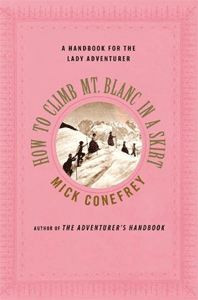 Mary Hall, The Victorian Traveler once said, “Take every precaution and abandon all fear.” How to Climb Mt. Blanc in a Skirt, by Mick Conefrey does just that.
Mary Hall, The Victorian Traveler once said, “Take every precaution and abandon all fear.” How to Climb Mt. Blanc in a Skirt, by Mick Conefrey does just that.
It’s the quintessential handbook for any independent, female explorer looking for adventure and discovery. Author Mick Conefrey understands that there is a distinctly female approach to travel and those imperative lessons can be learned by everyone from this approach.
Written in a humorous and comedic tone, this Handbook dares to explore the realm of women’s travel and exploration in various regions of the world. There was a time where exploration was seen as an almost exclusively male realm.
It was always an arduous task for women to gain permission to travel far and to raise the monetary funds necessary to do so. However, this book gives examples of some of the most famous and well-known women travelers of our time, and offers some eccentric and useful tips from their own personal exploration and travels around the world.
Many women travelers do not share the well-known status of male travelers, but this book is Conefrey’s attempt to redress the balance. Within this witty handbook, you’ll find dozens of female explorers, sailors, pilots, and equestrians. Some made their explorations a career, and some only made one great journey. Most were brave independent women, women with a dream, and all fascinating in their own way.
Explorers like Amelia Earhart and Freya Stark lived hugely exciting lives as explorers, but still, when it comes to exploration, women have rarely been accorded the same respect as men. Conefrey takes this challenge to bring the balance between male and female travelers back and does so in an exciting, witty and eccentric way. Find out why these female travelers were so fascinating and daring, in these excerpts from, How to Climb Mt. Blanc in a Skirt:
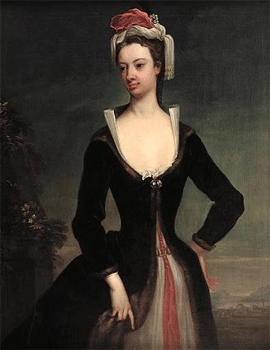
Excerpt from the Book:
Lady Mary Montagu Visits Constantinople, 1716-1718
Lady Mary Montagu was a larger-than-life British aristocrat, a society beauty, and witty sparring partner of the poet Alexander Pope. In 1716 she accompanied her husband, the British ambassador, to the Ottoman court in Constantinople.
On her return, she published what she claimed to be the first authentic account of life in a harem, scorning previous travel writers as “men who had written about what they didn’t know.” She was fascinated by Eastern sensuality, and her long description of Turkish women lounging naked in the bathhouse titillated and scandalized eighteenth-century Britain.
Isabella Bird Explores Persia and Kurdistan, 1890
In the early 1890s, Isabella Bird, then Europe’s most famous woman explorer, made an exhausting winter expedition to Persia and Kurdistan. She was meticulous and well organized.
On either side of her saddle, she wore two large holsters: one with a loaded revolver, the other with tea-making equipment. She began her journey through Persia in the dead of winter and suffered terribly from the cold even though she wore two coats, a jacket, and a mountain dress.
Bird’s fame meant nothing to local people, who treated her with hostility. She was not allowed to touch anything in the bazaar, lest her Christian hand should pollute it. She, in turn, was very critical of what she saw, in particular, the way in which females were treated: She wrote that rich women were led around on asses and tended to by eunuchs; poor women looked like hags by the age of 20.
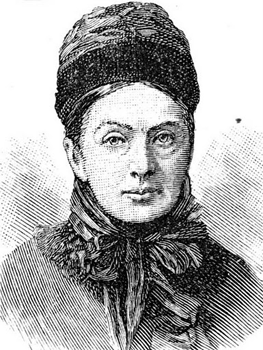
Hidden Dangers of the Desert: The Cold
The highest temperature ever measured on land was 136 degrees Fahrenheit, 58 degrees Celsius; this record was set in 1922 at El Azizia in the Libyan Sahara.
Deserts, however, can also get very cold. At night, temperatures can drop below freezing, and daily highs and lows can vary enormously. When Isabella Bird traveled through Persia, the mornings were so cold that her ink froze in its bottle, and her washbowl frequently iced over before she had a chance to bathe.
She wore three pairs of gloves and a six-layer face mask, but nothing could protect her from the vicious wind. Bird did have a recommendation though for future travelers: Take double peppermint lozenges to ward off the cold.
Sandfly Fever & The Desert
Isabella Bird also warned her readers of the dangers of sandfly fever, commonly known as Baghdad boils. It is transmitted by female sandflies, which carry tiny, single-cell parasites called Leishmania. Weeks, sometimes months, after being bitten, ugly burn like welts appear on a victim’s skin.
They can take up to a year to heal, frequently leaving large scars. In the worst cases, the parasites bury themselves in their victim’s internal organs, where they wreak havoc. Leishmaniasis remains the second most dangerous parasitic disease in the world after malaria, killing up to half a million people every year.
Gertrude Bell Journeys to Hayyil, Arabia, 1913-1914
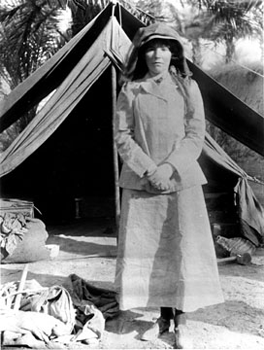
The first truly great female desert explorer was Britain’s Gertrude Bell. A skilled linguist, a respected archaeologist, cartographer, historian, ethnographer, alpinist, and government advisor, Bell was one hell of a lady. She was also, however, a singularly tortured individual: a passionate, intensely romantic woman who died a virgin, overdosing on sleeping pills just before her fifty-eighth birthday.
Bell made many epic journeys through the desert, but perhaps her most courageous expedition was in 1913 when she traveled from Baghdad to Hayyil in the middle of Arabia. Unlike her earlier archaeological field trips, this was a journey that had no ostensible motive, except one: to prove that she was up to the challenge.
Mary Kingsley Goes Upriver, 1893
The patron saint of African Explorers has to be Mary Henrietta Kingsley, the Victorian spinster who went to the Congo in search of “fish and fetish” and came back a collector, a committed traveler, and an advocate of native rights.
In 1893 and 1894, she made two journeys to West Africa, traveling through modern-day Congo. She spent much of her time with men from the Fan tribe, studying their customs. She was very proud of her mastery of the native canoe but found that she was usually expected to lead her men, wading through swamps and fording rivers, rather than take a more ladylike position at the rear.
Back in Britain, Kingsley handed over dozens of artifacts and specimens to her scientific friends and wrote a series of very successful books detailing her encounters with crocodiles, cannibals, and witch doctors and discussing the future of Africa. She became an important and respected voice on African affairs and spoke out both against the imposition of property taxes on Britain’s colonial subjects and what she saw as overzealous attempts to limit trade in alcohol.
What, and What Not, to wear in Africa
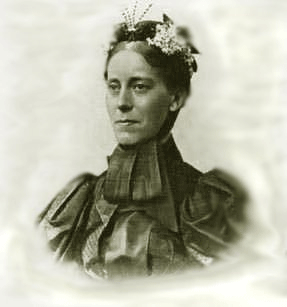
It was not until the second half of the twentieth century that trousers became a common item in women’s wardrobes; prior to this, many considered them distinctively unladylike. The rules were slightly different for travel, with some women adopting trousers for mountaineering, but there was still a lot of prejudice against what was seen as men’s clothing.
Mary Kingsley was one passionate advocate for skirts. She wrote that she would “rather perish on a public scaffold” than wear “you know what I mean.”
She claimed that skirts both enabled women travelers to keep up appearances and were practical clothing. When she fell into a hunter’s pit full of wooden spikes, Kingsley was saved from injury by the folds of her skirt and thereafter famously proclaimed “the blessings of a good thick skirt.”
Other women Victorian travelers also claimed that skirts and dresses were very practical. When the so-called world pilgrim Mary Hall got her dress wet on her epic trek from Cape Town to Cairo, she simply stripped down to her petticoats, confident that her porters wouldn’t notice the difference.
Modern-day explorer Christina Dodwell is also a fan of the long skirt. A smart skirt is both comfortable in the heat and practical, and according to Dodwell, likely to make a better impression on strangers than jeans or shorts. Her more general tip for remote travel is to dress like a teacher, the epitome of respectability.
Ann Davidson Crosses the Atlantic, 1953
It is always harder being the first person to do anything.
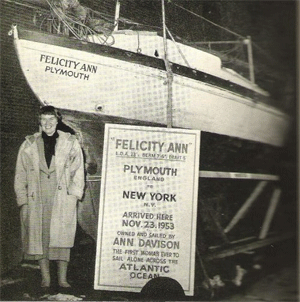
Ann Davidson deserves a preeminent place in any history of women’s sailing for being the first woman to sail across the Atlantic alone. In the 1930s, Ann had learned to fly, teaming up with another pilot, her future husband, Frank Davidson.
After World War II, they became interested in sailing, and Frank dreamed up an ambitious plan to take a yacht to the West Indies and begin a new life. Sadly, it was not to be: After they set sail from Liverpool in 1949, they were hit by a terrible storm that capsized their boat. Ann survived, but Frank perished.
She was devastated but eventually decided that the best way to achieve some peace was to attempt the same journey on her own. She bought a new boat, took lessons on navigation, and, in May 1952, set off to cross the Atlantic. The first half of the journey, from Britain to the Canary Islands, was long and relatively leisurely.
Getting from Las Palmas in the Canaries to the other side of the Atlantic was much more difficult. Davidson hoped to do it in 30 days but took enough rations for 60; the trip ended up taking her 65.
From “How to Climb Mt. Blanc in a Skirt” by Mick Conefrey. Copyright © 2011 by the author and reprinted by permission of Palgrave Macmillan, a division of Macmillan Publishers Ltd.
Buy this book from Amazon: How to Climb Mt. Blanc in a Skirt
Eurail Passes: What to Know about Buying a Europe Train Pass
- These 9 U.S. National Parks Require Reservations in 2024 - April 17, 2024
- Take a Hike in Olympic National Park - April 17, 2024
- The Wild Mississippi: 2340 Miles Across Ten States - April 8, 2024

